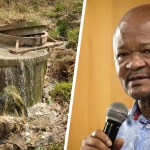When you’ve immersed yourself deeply in the fracking debate, as I have, it is easy to lose sight of the fact that you mostly speak with people who are very familiar with the topic.
It may be frustrating to revisit points settled ages ago, but the consequence is that well-established facts don’t get as much media play as they ought to, and allows environmentalists to claim that the only reason surveys find that the public is overwhelmingly in favour of shale gas development is because they don’t know the facts.
When the subject came up in a discussion among non-experts recently, all the old myths and lies surfaced. So did the usual ad hominem caricature of me as a fool, a madman, a shill and too rich to care about the environment. The most vitriolic of the anti-fracking faction declared me to be angry and something else I can’t remember, and appealed to the amused audience to ignore me and watch the film Gasland instead.
This gave me an opportunity to debunk some common misconceptions that started with that film, and persist in the media to this day.
Despite being nominated for a “best documentary” Oscar, and winning the 2010 Sundance Film Festival Special Jury Prize, this film contains a lot more fiction than fact. It is dishonest propaganda in the Michael Moore style. It is an excellent example of the genre of activism through tendentious fiction posing as documentary filmmaking.
Gasland is an emotional tour de force. It also contains many outright lies. Its writer and director, Josh Fox, has admitted in public that he knew some of the film’s claims were lies.
Despite this, people who respond to the emotional appeal of such films, or to the “heroic” activism of organisations like the Treasure the Karoo Action Group, love promoting this kind of biased junk science.
Do watch it. Then permit me to highlight just a few examples of the lies that appear in the film. I’m not the first to make such a list, by a long shot, but if it’s going to continue being cited, then it ought to continue being disputed.
To keep it within a reasonable length, I’ll limit the list to 10 points, plus two other long-discredited arguments that keep cropping up, though not in Gasland itself. These should be sufficient to resoundingly prove that Gasland in particular, and the opponents of fracking in general, cannot be believed.
1. Josh Fox used wells belonging to Mike Markham and Renee McClure for spectacular demonstrations of flammable tap water that have become the signature image of the film. In a statement to address what it claims are errors in the film, the Colorado Oil & Gas Conservation Commission says it investigated both wells, and found that both contained “biogenic” gas typical of the shallow coal beds of the region. The first documented case dates back to 1976.
Journalist Phelim McAleer got Josh Fox to admit that he knew the difference between “biogenic” methane and the “thermogenic” kind, which comes from deep shale rock, which makes his claim in the film that it was caused by fracking an outright lie. Fox adds that he doesn’t consider it relevant that there was gas in the groundwater before fracking started, or that there was flammable tap water in New York State in 1936. He explicitly dismisses scientific evidence in favour of false anecdotal claims for the sake of award-winning footage.
When McAleer published the Q&A session, Fox sicced his lawyers on him for supposedly violating copyright on the 26-second clip to which McAleer was referring. Despite it being a clear case of fair use for the purpose of journalism, and despite the availability of the entire film on YouTube, the clip was pulled down. You can still see McAleer challenging Fox on Vimeo.
2. A similar argument goes for West Divide Creek, a river in Colorado, where a local landowner, Lisa Bracken, complained of methane caused by gas drilling. Fox relates her story as if it were true.
The truth is Colorado state regulators conducted several detailed tests between 2004 and 2008, and in no case could they find any trace of any of the chemicals that might point to pollution caused by the oil and gas industry. It communicated these conclusions in a public presentation.
The state’s environmental protection supervisor concluded that the source of methane seen bubbling up in the stream is, quite simply, “abundant dead vegetation along creek course.” In short, it’s good old-fashioned swamp gas, not fracking pollution.
3. Fox claims that natural gas drillers inject toxic chemicals “directly into drinking water”. Moreover, he claims that the law actually permits this, because shale gas drilling is unregulated. False, false and false. Fracking fluid goes thousands of metres deep, while aquifers lie at most 500m deep. Wells are heavily sleeved with concrete and steel for most of their depth, and failures are rare.
If gas drillers did inject frack fluid directly into drinking water, why would they invest in well sleeving? And why would it take a proven liar to expose this in a film? All it would take are a few tests, and those hardly ever find even suspicious circumstances that might indicate accidental pollution, let alone evidence that deliberate contamination takes place.
4. The claim that gas drilling is exempt from regulations is also false. It is not proven by citing particular exemptions to parts of federal laws to which it has never been subject and which were designed for entirely different purposes. The industry is extensively regulated under the Clean Water Act, the Occupational Safety and Health Administration, the Safe Drinking Water Act and the Community “Right to Know” Act.
Of course, US regulation is not exactly relevant in South Africa, where the government is free to impose whatever regulations it feels are necessary to ensure safety, prevent pollution and deal appropriately with waste water.
An argument based on inadequate regulation or incapable enforcement may be a case for improving regulation and enforcement capacity. It is not a sound reason to advocate a pre-emptive ban against a new industry sector which isn’t even particularly risky.
5. Fox says fracking uses “a mix of 596 chemicals”. No, it doesn’t. It uses perhaps a dozen, depending on the particular circumstances at a given well. That’s like saying a painter uses 596 different paints, just because the paint store stocks them all.
The viewer is supposed to draw the false inference that the environment, or innocent residents, are somehow likely to be exposed to these chemicals, but the “how” in “somehow” is never really explained. These supposedly scary pollutants do get into the environment, but rarely from natural gas drilling. A common origin is pool chemicals, soap, fertilizer, anti-freeze, pesticides or oil that enter the environment from soil leaching or via stormwater drains.
The chemicals claim is nothing other than misleading fear-mongering, designed to scare the public with names of dangerous-sounding chemicals like 2-butoxyethanol, which is a common ingredient in liquid hand soap and other household detergents and has only ever been found once near a gas well, though the findings of environmental agencies on this case remain sufficiently in dispute to have occasioned a Congressional hearing.
And it’s not like a propaganda film will tell you about CleanStim, a food-grade product made by Halliburton for hydro-fracking gas wells. The company doesn’t recommend doing so, but you can drink it. You see, that’s not scary.
6. Fox tells you that containment pits or tanks allow waste water to “seep into the ground”, which is an outright falsehood. They have to be impermeable, and be nowhere near groundwater just to be safe. To minimise the risk of accidents or cracks, modern shale gas operations use stainless steel tanks for temporary waste water storage. Again, Fox won’t tell you that.
He also doesn’t tell you about developments in recycling fracking water, which separates out mining solids that ordinary waste water plants can’t deal with, and is exactly what is proposed in South Africa.
Nor will you learn in Gasland that what is left down the well is perfectly safe, because shale gas wells are not much different from injection wells, which have been the go-to solution since the 1930s for keeping waste water isolated from the environment for millennia to come.
And he won’t tell you that oil companies are so sensitive to public opinion that one of them spent R107-million to build the biggest waste water treatment plant in South Africa to re-treat perfectly harmless water that was being discharged offshore quite legally, just to keep a few annoyed kite surfers happy.
7. The Dunkard Creek fish kill, shown to dramatic effect in the film, had nothing to do with shale gas drilling. It was caused by runoff from an abandoned coal mine. The Environmental Protection Agency report on the case was out well before Fox made his film.
Consol, the coal mining company responsible for it, has already paid out millions in civil damages claims, and continues to face charges. Yet to this day, opponents of gas drilling claim that this was a proven case of environmental destruction caused by hydraulic fracturing. That is quite simply a lie.
All this incident shows is that there are severe consequences for pollution.
8. Josh Fox claims that the chemicals in fracking fluid are secret. He says an intrepid environmentalist, Theo Colbrun, had to find out what they were by “by chasing down trucks, combing through material safety data sheets, and collecting samples.” This is a lie.
Perhaps Colbrun did chase down trucks, but if she did (note: she’s an octogenarian), she needn’t have bothered. Not only did many states require full disclosure and maintain their own public databases of fracking chemicals at the time Fox made his film, but since then the shale gas industry itself voluntarily discloses what chemicals it uses.
The truth, which does not make for good anti-fracking propaganda, is this: look up any gas well you like on fracfocus.org, and you’ll get a detailed list of the chemicals used at that particular site.
Yet nobody ever tells anyone that. I’m not exaggerating. The sole article I have ever found in South Africa that mentions this resource appears in an obscure trade publication, Energized.
In South Africa’s mainstream media, the shale gas industry’s own chemical disclosure registry has been entirely invisible.
This silence is an abdication of the responsibility to be honest and impartial, on the part of journalists who are either sympathetic to the activists’ cause, or are environmental activists themselves. It’s a disgrace.
9. Fox claims that gas fields in Wyoming are “directly in the path of the thousand year old migration corridor of pronghorn antelope, mule deer and sage grouse.”
He adds: “And yeah, each of these species is endangered, and has suffered a significant decline of their populations since 2005.”
All of this turns out to be untrue. Three species of the pronghorn antelope are considered endangered, and they are found in Arizona and Mexico, not Wyoming. About the Wyoming pronghorns, the Great Plains Nature Center says: “The great slaughter of the late 1800s affected the pronghorns… Only about 12,000 remained by 1915. Presently, they number around one million and the greatest numbers of them are in Wyoming and Montana.” Oops. One species of mule deer is considered endangered. It, too, lives in Mexico, not Wyoming. Oops. In fact, mule deer are so abundant in Wyoming that there’s a hunting season for them. Oops. The sage grouse is not endangered either. According to the U.S. Fish & Wildlife Service, “robust populations of the bird currently exist across the state” of Wyoming. Like with the mule deer, there’s a grouse-hunting season. However, the Fish & Wildlife Service did recently report that wind development is a critical threat to the sage grouse’s habitat. Oops, oops, oops, and oops.
Actually, I shouldn’t joke. These aren’t just embarrassing errors. They’re outright lies, the sole purpose of which is to paint shale gas development as an existential threat to the environment.
10. Fox quotes the mayor of Dish, Texas, who claims that residents were exposed to high levels of cancer-causing chemicals like benzene. Of course, such a claim requires an investigation, and that’s exactly what the Texas health authorities did. Result? The claim is false.
They found exposure to toxins and blood toxin levels “similar to those in the general US population”. The only exceptions to this finding were in smokers. That may be because there’s benzene in cigarette smoke.
Fox lied, in the hope that people would believe shale gas to be a great risk to human health.
11. As suggested in the paragraph about flammable water, methane in drinking water is neither new nor dangerous. A Duke University study by Jackson, Vengosh et al doesn’t prove otherwise, despite what they or the newspaper headlines said about it.
When, on 9 May 2011, the respected magazine Scientific American published a headline based on the Duke study that said: “Hydraulic fracturing for natural gas pollutes water wells”, it made itself guilty of an outright lie. That is disturbing, because readers take this publication very seriously.
In truth, the Duke study found no traces of fracking chemicals and cannot say whether methane levels in water wells changed after gas drilling began. The researchers concluded that they could not determine that methane in the water wells were caused by fracking, and if so, how that it got there from the gas wells.
The Pennsylvania Department of Environmental Protection conducted a follow-up study as a result of the Duke findings, and its head, Scott Perry, came back saying: “We’ve collected enough data to completely refute the Duke study… We have a large sample set. It really shows there’s no correlation.”
Professor Gerrit van Tonder, of the Institute for Groundwater Studies at the University of the Free State, wrote me an email to point out that methane in the concentrations the Duke researchers found is not a health risk. The Duke report concedes this, noting that this is why it isn’t regulated as a drinking water contaminant. Other than that it is flammable, it is no different from oxygen or carbon dioxide in your water.
Van Tonder also told me that gas in well water is a common problem, and farmers know to deal with the fire hazard by using a ventilated storage tank to flash off the gas.
These guys at Duke set out with the explicit intention to find scientific evidence that hydraulic fracturing causes pollution. Despite their best efforts, they failed.
12. Finally, there’s the notion that natural gas, over its entire life cycle, is actually dirtier than coal. This is based on a single study from Cornell University, which blames “fugitive emissions” of methane – the very gas that drillers are trying to capture and sell – for increased greenhouse-gas potential.
There’s no dispute that natural gas emits fewer actual pollutants than coal. According to Energy Information Administration numbers, gas produces one-fifth as much carbon monoxide and nitrogen oxides, and practically no sulphur compounds, mercury or particulate matter. That sounds like a great improvement on coal to me, and I’ll take a gas well over a coal mine in my back yard any day.
The EIA also says gas produces half as much carbon dioxide when burnt, and this is the statistic the Cornell researchers aimed to argue against. However, many studies have been done on total lifecycle emissions for natural gas of both carbon dioxide and methane, both before and after the Cornell study, but none of them agree with the latter’s findings.
The first time its lead author, Robert Howarth, tried to claim coal was cleaner than natural gas, he had to retract his report in a hurry, because he didn’t know coal extraction also releases methane. The other author, Tony Ingraffea, is well known on the activism circuit as a speaker against fossil fuels of any kind.
One could delve into the details of the dubious, non-standard and sometimes entirely wrong assumptions on which Howarth and Ingraffea base their conclusions. One could mention so-called green completions, which limit natural gas venting after a well has been prepared and before it starts pumping gas.
Like food-grade fracking fluid and recycled flowback water, this is not a storyline you’ll often see in the media.
However, it seems worth quoting environmentalists themselves denouncing research that is cited by others in support of the environmentalist position.
The Worldwatch Institute, a well-known greenie group, released a report of which the “key message” is “natural gas offers greenhouse gas advantages over coal.”
It declares: “Despite differences in methodology and coverage, all of the recent studies except Howarth et al estimate that life-cycle emissions from natural gas-fired generation are significantly less than those from coal-fired generation.”
Dave McCabe is an atmospheric scientist with an anti-pollution NGO called the Clean Air Task Force. It is dedicated to renewable energy and strongly opposes all fossil fuels, including natural gas, as horrible pollutants.
He denounced the Cornell study in the strongest terms: “This paper is selective in its use of some very questionable data and too readily ignores or dismisses available data that would change its conclusions.”
If even the renewable energy faithful don’t believe Howarth and Ingraffea, why should anyone else?
Despite this litany of lies, those who fear shale gas drilling would have you believe Gasland is worth watching because it demonstrates the imminent destruction of the Karoo. They are either gullible or dishonest.
That term “destroy” is not my exaggeration. It is the term the Treasure the Karoo Action Group used when they launched their anti-fracking campaign. Jonathan Deal admitted in a public debate with me at Grahamstown University in July 2011 that this kind of rhetoric was emotive and exaggerated, but that it was needed to put the issue on the agenda. Now that it is firmly on the agenda, a moratorium has been called, studies are being done, and the activists are lining up their lawyers to delay the process with legal obstructionism over procedural nonsense, one would think the need for such language has passed. But no. This is language that keeps getting used, most recently in the headline of a review of Deal’s book of landscape photography. In it, the reviewer, in “horror and disbelief”, declares that the book “clearly shows what will be lost if fracking is allowed to go ahead”.
A journalist – even a book reviewer – should be embarrassed by this kind of hysteria. He falls for the nonsense whipped up by environmentalists like Deal, though it is entirely based on a web of fabrications and lies. Why bother checking the facts? It’s hard work, that. It requires research and in-depth study. It takes time. Only fools and madmen bother with that kind of stuff.
Of course, none of this will sway the true believers who think the state must use force against companies to protect the rest of us from industrial development and economic progress.
They continue to repeat these tired old lies.
Take an article on fracking in this month’s issue of Rolling Stone magazine. In the print version, it manages to squeeze “fracking” “bubble”, “toxic”, “right-wing”, “billionaire”, “profits”, “flipping”, “boom”, “scam” and “hot air” all into a single headline and blurb. Respect, dudes.
I don’t propose to fisk this piece in its entirety, beyond chuckling at the delicious irony that a supposed right-wing power broker and evil billionaire voted for Barack Obama and donated millions to the Sierra Club because he believes natural gas is more attractive to environmentalists than coal. The article would make a great subject, but whether or not particular companies make money on shale gas is not of as much interest to me as whether they ought to have the right to supply South Africa with an abundant source of clean, domestic energy.
Note, however, as you read yet another example of eco-propaganda in the mainstream media, that the article uses exactly the same hackneyed falsehoods that Gasland made popular and that were discredited ages ago.
It cites the Cornell study on fugitive emissions, and fails to mention that every other study disagrees with it. It cites the Duke study, and fails to mention that even committed environmentalists think it’s a joke. It repeats the dramatic storyline of setting tap water on fire, even though very few, if any, cases had anything to do with gas drilling. It repeats the lie that the shale gas industry is “largely unregulated” and that fracking chemicals are secret.
These are all lies, distortions and myths. They are enduring. They are dangerous, because this “common knowledge” influences not only public opinion, but also the decisions of policy makers.
Can South Africa afford to sacrifice its economic future to the falsehoods peddled by environmentalists? If eco-lobbyists like the Treasure the Karoo Action Group succeed in chasing shale gas investors away by cultivating public myths and using legal delay tactics, they will have a lot to answer for.
Perhaps the Karoo Shale Gas Community Forum, which is in favour of shale gas drilling, can take the lying environmentalists to court on behalf of the country’s poor and unemployed.
Although, truth be told, the story of the Karoo Shale Gas Community Forum is another one you don’t often see in the media. The Treasure the Karoo Action Group accounts for over 500 times more mentions online, according to Google. Judging by this paucity of coverage, and the fact that the community forum claims its members don’t have the money to travel to major cities to protest in support of shale gas drilling, they may not be able to afford to see justice done.
PS. It is with regret that I learnt this morning of the death of Tony Twine, an economist with Econometrix, who recently produced an extensive and very optimistic report analysing the economic benefits for South Africa of successful shale gas exploration. His editorial on the subject can be read here. DM
















